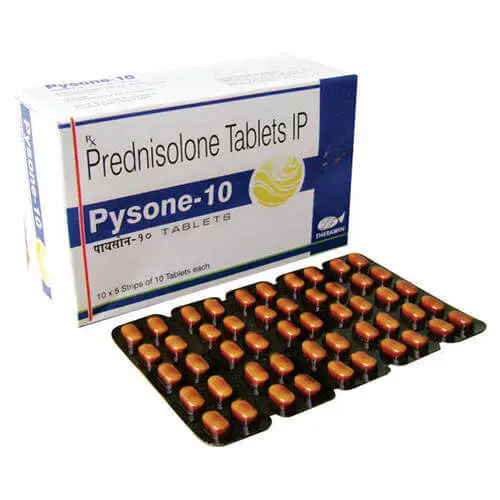Indomethacin: Uses, Risks, and Benefits
Table of Contents
Introduction
Indomethacin is a nonsteroidal anti-inflammatory drug (NSAID) that is commonly used to reduce inflammation and alleviate pain. It belongs to the class of medications known as indole-acetic acid derivatives. Indomethacin works by inhibiting the production of certain chemicals in the body that are involved in the inflammatory response.
It works by inhibiting the synthesis of prostaglandins produced primarily by cyclooxygenase enzymes which are helping to reduce inflammation, fever, and pain. Indomethacin is used to manage acute pain, rheumatoid arthritis, osteoarthritis, bursitis, gouty arthritis, and patent ductus arteriosus.
It received medical use approval in 1963 after being granted a patent in 1961. The World Health Organization lists it as a necessary medication. With over 800,000 prescriptions written for it in 2020, it was the 320th most often prescribed drug in the US.
Generic Name – Indomethacin
Type – Small Molecule
Groups – Approved
Metabolism: Hepatic
Bioavailability: 100% (oral), 80-90% (rectal)
Chemical Formula – C19H16ClNO4
Protein binding: 99%
Elimination half-life: 2-11 hours (adults), 12-28 hours (infants)
Route of elimination: mouth, rectal, intravenous, topical
Brand names
Indocin®
Tivorbex®
Synonyms
Indometacina
Indometacine
Indometacinum
Indomethacin
Indications:
Indomethacin is a potent nonsteroidal anti-inflammatory drug (NSAID). It is used to treat a number of illnesses as an analgesic, antipyretic, and anti-inflammatory.
Pain (Acute)
Indomethacin is used to treat mild to moderate acute pain in adults.
Rheumatoid Arthritis
Physicians can treat rheumatoid arthritis (RA) with indomethacin; however, more potent disease-modifying anti-rheumatic drugs (DMARDs) have been shown to be more successful in stopping the disease’s progression. For this reason, indomethacin is rarely used as a monotherapy; rather, it is frequently combined with medications like infliximab and methotrexate.
Osteoarthritis
Osteoarthritis (OA), a noninflammatory type of arthritis characterized by joint stress, can often be effectively treated with indomethacin. The first-line treatment for OA is acetaminophen, but it’s important to remember that indomethacin and other NSAIDs can also be quite helpful.
Bursitis
Bursae are sacs filled with synovial fluid that lubricate joints; inflammation of the bursae is a sign of bursitis. Consequently, erythematous, painful joints may be the first sign of bursitis. Indomethacin can also be used to treat this condition.
Gouty Arthritis
Urate crystal deposition in joints causes gouty arthritis, which typically manifests as an acute erythematous joint—typically the hallux—and may also be treated with indomethacin.
Patent Ductus Arteriosus
A non-cyanotic cardiac condition called patent ductus arteriosus (PDA) causes left-to-right shunting. The severity of this condition depends on various factors; however, it needs to be closed therefore indomethacin can help to treat this condition.
Plantar Fasciitis
Plantar fasciitis is an orthopedic condition that involves pain on the foot’s plantar (heel) surface. Walking and bending may aggravate the condition, but indomethacin can help to mitigate the symptoms and it can also reduce back pain.
Headache Disorders
The following headache conditions are sensitive to indomethacin: paroxysmal hemicrania, primary cough headache, exercise headache, hypnic headache, headache during sexual activity, and stabbing headache. A new study suggests that indomethacin may help with post-COVID headaches that are resistant.
Mechanism of action:
Indomethacin’s mechanism of action involves its ability to inhibit enzymes called cyclooxygenases (COX), specifically COX-1 and COX-2. These enzymes are involved in the production of prostaglandins, which are lipid compounds that play a key role in inflammation, pain, and fever.
Here’s a detailed breakdown of indomethacin’s mechanism of action:
Inhibition of Cyclooxygenase (COX) Enzymes: Indomethacin is a non-selective NSAID, which means it inhibits both COX-1 and COX-2 enzymes. The production of prostaglandins from arachidonic acid is carried out by COX enzymes.
COX-1: This enzyme is constitutively expressed in many tissues and plays a role in maintaining normal physiological functions, such as protection of the gastric lining, regulation of kidney function, and platelet aggregation (clotting). Inhibiting COX-1 can lead to some of the side effects associated with NSAID use, including gastrointestinal irritation and potential bleeding.
COX-2: This enzyme is induced at sites of inflammation and is responsible for producing prostaglandins that promote inflammation, pain, and fever. Inhibiting COX-2 is the primary mechanism by which NSAIDs like indomethacin exert their anti-inflammatory and analgesic effects.
Reduction of Prostaglandin Levels: By inhibiting COX enzymes, indomethacin decreases the production of prostaglandins, which are lipid compounds that play a central role in inflammation, pain signaling, and fever response.
Anti-Inflammatory Effect: The reduction in prostaglandin levels leads to a decrease in inflammation. This is particularly important in conditions like rheumatoid arthritis and osteoarthritis, where excessive inflammation contributes to joint pain and damage.
Analgesic Effect: Indomethacin’s analgesic effect (pain relief) is a direct result of its anti-inflammatory action. Reducing inflammation alleviates pain associated with various conditions.
Antipyretic Effect: Indomethacin can also lower fever, as fever is often mediated by prostaglandins in response to an infection or inflammation.
It’s important to note that while indomethacin can be effective in managing pain and inflammation, it should be used under the guidance and supervision of a healthcare professional, It might interact with other drugs and have unintended effects. The dosage and duration of use should be determined by a healthcare provider based on the specific condition being treated and the patient’s individual health profile.
Pharmacokinetics:
Absorption: Indomethacin is efficiently absorbed, taking two hours to reach peak plasma concentrations. Bioavailability is approximately 100%.
Distribution: Indomethacin can readily pass across the blood-brain barrier due to its high lipid solubility. In synovial fluid, indomethacin likewise reaches a high concentration.
Metabolism: Indomethacin undergoes hepatic metabolism, primarily through the cytochrome P450 (CYP) enzyme system. CYP2C9 and CYP2D6 are the key enzymes involved in the metabolism of indomethacin. The primary metabolic pathway involves the conversion of indomethacin into several metabolites, including dimethyl indomethacin (DMI). DMI retains some of the pharmacological activity of indomethacin.
Excretion: Approximately 60% of the administered indomethacin is excreted in urine by renal tubular secretion, while the remainder is excreted in feces after biliary secretion. The elimination half-life of indomethacin is approximately 7 hours but is highly irregular (1.5 to 16 hours) because of enterohepatic circulation.
As with any medication, the pharmacokinetics of indomethacin can vary from person to person, and individual factors, such as age, liver function, and kidney function, can influence how the drug is metabolized and eliminated. Therefore, healthcare professionals often tailor the dosing regimen and monitor patients to ensure the medication’s safety and effectiveness.
Functions of Indomethacin:
Indomethacin is a nonsteroidal anti-inflammatory drug (NSAID) with a variety of functions and therapeutic uses. Its primary function is to reduce inflammation, pain, and fever. Here are the key functions and medical indications of indomethacin:
Anti-Inflammatory: Indomethacin is primarily used for its anti-inflammatory properties. It works by inhibiting the production of prostaglandins, which are chemicals that play a central role in promoting inflammation in the body. This anti-inflammatory effect is valuable in treating conditions characterized by inflammation, such as rheumatoid arthritis, osteoarthritis, ankylosing spondylitis, and acute gouty arthritis.
Analgesic (Pain Relief): Indomethacin is an effective analgesic, meaning it provides pain relief. By reducing inflammation and its associated pain, it helps alleviate various types of pain, including joint pain, musculoskeletal pain, and headache. It can also be used in postoperative pain management.
Antipyretic (Fever Reduction): Indomethacin has antipyretic properties, which means it can lower fever. It is used to reduce fever associated with infections or other inflammatory conditions by lowering prostaglandin levels in the brain’s hypothalamus, which controls body temperature.
Closure of Patent Ductus Arteriosus (PDA) in Neonates: Indomethacin is sometimes used in neonates (premature infants) to promote the closure of a patent ductus arteriosus (PDA), a blood vessel that normally closes shortly after birth but can remain open in some infants. Indomethacin’s vasoconstrictive effects can help close the PDA and improve blood circulation.
Migraine Headache: In some cases, indomethacin may be used to treat migraine headaches, particularly when other migraine medications are ineffective.
Other Conditions: Indomethacin has been studied for its potential benefits in other conditions, such as Alzheimer’s disease and certain types of cancer, due to its anti-inflammatory properties. However, its use in these conditions is not considered standard practice and requires further research.
It’s important to note that indomethacin is a prescription medication, and its use should be directed and monitored by a healthcare professional. While it can be effective in managing pain, inflammation, and fever, it is not without potential side effects and interactions with other drugs. The dosage and duration of use should be determined based on the specific condition being treated and the patient’s individual health profile.
How long does it take to work?
The time it takes for indomethacin to work can vary depending on several factors, including the individual, the specific condition being treated, and the form of the medication (e.g., oral capsules, suppositories, or topical gel). However, here are some general guidelines for when you might start to feel the effects of indomethacin:
Oral Formulate Anti-Inflammatory Effect: Indomethacin’s anti-inflammatory effects may start within a few hours to a day after taking the medication. However, it may take a few days for the full anti-inflammatory effect to be realized. Some people may experience relief sooner, while others may require more time because it depends on the patient’s specific condition.
Fever Reduction: Indomethacin’s antipyretic (fever-reducing) effects may lead to a reduction in fever within a few hours after taking the medication.
Suppositories: Rectal suppositories are sometimes used when rapid relief is needed. The onset of action with rectal suppositories can be faster than with oral formulations, and you may start to experience relief within an hour or two.
Topical Gel: For topical indomethacin gel applied to the skin, the onset of action may vary. Some people may experience localized pain relief relatively quickly after applying the gel, while others may require more time.
It’s important to keep in mind that individual responses to indomethacin can vary. Some people may respond more rapidly to the medication, while others may take longer to experience the full effects. The specific condition being treated can also impact the time it takes to notice improvement. Additionally, the dosage and frequency of indomethacin use prescribed by your healthcare provider will play a role in how quickly it works.
What are the adverse effects of the Indomethacin drug?
Many investigations on the negative effects of indomethacin, a medication that is frequently used, have been carried out by researchers. The majority of NSAIDs, including indomethacin, have the potential to affect the gastrointestinal, neurological, renal, hematologic, and cardiovascular systems among other bodily organ systems.
The most frequent side effects include nausea, dizziness, headaches, and dyspepsia. It is important to understand that indomethacin is used to treat a variety of headache conditions and that headaches are among the most frequent side effects.
Indomethacin has been known to trigger hypersensitivity events, such as urticaria, angioedema, and anaphylaxis.
A non-selective COX inhibitor, indomethacin helps to preserve the stomach mucosa by preventing COX-1 from producing prostaglandins. Constipation, diarrhea, nausea, and dyspepsia (indigestion) may occur from blocking this mechanism. Nevertheless, the development of peptic ulcers is the most serious adverse effect of indomethacin on the stomach. Peptic ulcers can manifest as mid-epigastric discomfort that, depending on where they are located, is either eased or made worse by food. Similarly, eating aggravates the pain associated with gastric ulcers. On the other hand, eating reduces the discomfort brought on by duodenal ulcers. Ruptures of ulcers might cause an acute surgical abdomen.
A higher risk of cardiovascular thrombotic events, such as myocardial infarction and stroke, is linked to NSAIDs, especially indomethacin.
The risk of severe GI bleeding, ulcers, and perforations can rise after taking indomethacin.
Jaundice and increased liver enzymes are two more liver-related side effects of indomethacin.
Additionally, the neurologic system may be affected by indomethacin, leading to headaches, vertigo, depression, tinnitus, and dizziness. Moreover, evidence of severe adverse responses, such as aseptic meningitis, psychosis, and cognitive impairment, has been provided.
The synthesis of prostaglandins involved in renal function is carried out by COX enzymes. If this mechanism is inhibited, renal insufficiency may occur. Acute interstitial nephritis and hyperkalemia are other side effects of indomethacin. Consequently, patients taking diuretics, ACE inhibitors, ARBs, hypovolemia, renal dysfunction, heart failure, impaired liver function, and the elderly are more likely to experience side effects.
Agranulocytosis, aplastic anemia, hemolytic anemia, leukopenia, thrombocytopenia, and thrombocytopenic purpura are only a few of the disorders that indomethacin may cause in the hematopoietic system. It has been documented that indomethacin can cause leukocytoclastic vasculitis.
Acute respiratory distress, pulmonary edema, and congestive heart failure are complications of indomethacin’s effects on the cardiopulmonary system.
Respiratory difficulties: Arachidonic acid is the precursor to prostaglandin synthesis via the COX enzymes; inhibition of COX enzymes results in the shunting of arachidonic acid to the leukotriene synthesis pathway, resulting in the formation of nasal polyps from indomethacin which cause respiratory difficulties.
Drug-Drug interactions:
Several medications used to treat cardiovascular diseases (such as diuretics, ACE inhibitors, and ARB inhibitors) may have less of an impact when taken with indomethacin.
Indomethacin can increase lithium levels; simultaneous use of indomethacin with lithium should be avoided.
Indomethacin with oral apixaban, is associated with an increased risk of bleeding. Avoid concurrent administration combination.
Methotrexate plasma levels can rise when indomethacin and methotrexate are used together. it may cause methotrexate toxicity.
Furosemide and thiazide’s natriuretic impact can be lessened by indomethacin, which also lessens their effectiveness. There is an increased risk of acute kidney injury when indomethacin is combined with diuretics.
Contraindications:
It is important to be aware of contraindications or situations in which the use of indomethacin should be avoided due to potential risks. Some contraindications and precautions for indomethacin include:
Allergy or hypersensitivity: Do not use indomethacin if you have a known allergy or hypersensitivity to this medication or other NSAIDs, such as aspirin or ibuprofen. Allergic reactions can be severe and life-threatening.
History of gastrointestinal bleeding or ulcers: Indomethacin can increase the risk of gastrointestinal bleeding and ulcers. If you have a history of these conditions, it may not be a suitable choice for you.
Active peptic ulcer disease: Indomethacin can exacerbate peptic ulcers or cause new ulcers to develop, so it is generally contraindicated in individuals with active peptic ulcer disease.
Severe renal impairment: Indomethacin is excreted through the kidneys, and if you have severe renal impairment, it can accumulate in your body, potentially leading to toxicity. It could be necessary for your healthcare professional to change the medicine or change the dosage.
Severe heart failure: Indomethacin can cause fluid retention and increased blood pressure, which may worsen heart failure symptoms in individuals with severe heart disease.
Heart attack or stroke: NSAIDs, including indomethacin, may increase the risk of heart attack and stroke. It is generally recommended to avoid these medications immediately following a heart attack or stroke.
Pregnancy and breastfeeding: Indomethacin is not recommended during the third trimester of pregnancy, as it may harm the developing fetus. When nursing, it should also be used carefully.
Coagulation disorders: People with bleeding disorders or those taking anticoagulant medications should use indomethacin with caution, as it may increase the risk of bleeding.
Asthma: Some individuals with asthma may be at increased risk of bronchospasm when using indomethacin or other NSAIDs.
Children under 14 years of age: The use of indomethacin in children under 14 years old is generally not recommended, except in certain medical conditions under the guidance of a healthcare professional.
It’s important to consult with a healthcare provider before using indomethacin, especially if you have any medical conditions or are taking other medications, to determine whether it is safe and appropriate for your specific situation. Always follow your healthcare provider’s instructions and the medication label carefully.
Monitoring:
Monitoring is essential when using indomethacin tablets to ensure the medication’s effectiveness and safety. Observe the following crucial elements:
Pain and Inflammation: The primary reason for using indomethacin is to alleviate pain and reduce inflammation. Record your pain and symptom levels. If you don’t experience relief or your condition worsens, consult your healthcare provider.
Gastrointestinal Symptoms: Indomethacin can irritate the stomach lining and increase the risk of ulcers and bleeding. Watch for symptoms like stomach pain, nausea, vomiting, or black, tarry stools. If you experience these, report them to your healthcare provider promptly.
Blood Pressure: Indomethacin can elevate blood pressure in some individuals. Keep a close eye on your blood pressure, particularly if you’ve previously experienced hypertension.
Kidney Function: Since indomethacin is excreted through the kidneys, your healthcare provider may order periodic blood tests to assess kidney function. If you have pre-existing kidney issues, monitoring is especially important.
Liver Function: Although less common, indomethacin can affect liver function. Routine liver function tests can help detect any abnormalities.
Fluid Retention: Indomethacin can lead to fluid retention. If you notice sudden weight gain or swelling, especially in your extremities, report this to your healthcare provider.
Heart Health: Regularly monitor your cardiovascular health if you have a history of heart disease or risk factors. Indomethacin may increase the risk of heart attack and stroke in some individuals.
Asthma: If you have asthma, be vigilant for any worsening of symptoms, as indomethacin may trigger bronchospasm in some individuals.
Bone Health: Long-term use of indomethacin and other NSAIDs can have adverse effects on bone health. If you need to take indomethacin for an extended period, discuss bone health monitoring with your healthcare provider.
Medication Interactions: Keep an updated list of all medications you are taking, as indomethacin can interact with other drugs. Ensure your healthcare provider is aware of these interactions.
Adverse Effects: Pay attention to any side effects such as headache, dizziness, skin rashes, or changes in urine color. If you face any negative consequences, get in touch with your physician.
Pregnancy and Breastfeeding: If you are pregnant or breastfeeding while using indomethacin, closely follow your healthcare provider’s recommendations and attend all prenatal or postnatal appointments.
Dosage and Compliance: Make sure you are taking the correct dosage as prescribed by your healthcare provider and follow the dosing schedule diligently.
Regular communication with your healthcare provider is crucial to effective monitoring. They can adjust your treatment plan as needed and address any concerns or complications that may arise during the course of your indomethacin treatment.
Toxicity:
There are very few examples of indomethacin toxicity documented in the literature. Examples reported in the literature have included acute kidney damage (AKI) brought on by indomethacin poisoning, as well as headache, tinnitus, dizziness, lethargy, drowsiness, confusion, disorientation, and restlessness.
Handle patients with supportive and symptomatic care in the event of an overdose of indomethacin. Indomethacin toxicity does not have a specific counteragent. Consider administering 60 to 100 grams of activated charcoal or inducing emesis in adult patients in order to reduce the absorption of NSAIDs from the upper GI tract. When symptomatic individuals are encountered within four hours of an overdose or when patients have consumed five to ten times the normal amount of indomethacin, osmotic cathartics may be administered. For thorough details on the recommended course of treatment.
What should I know regarding the storage and disposal of this indomethacin drug?
Storage:
Keep in a cold, Dry location: Trihexyphenidyl needs to be kept out of direct sunshine, heat, and moisture. It should be placed in a cool area. Keep it out of the kitchen and bathroom, where there may be changes in humidity and temperature.
Keep Out of Reach of Children: Store trihexyphenidyl somewhere that kids and dogs can’t get to. Medications must always be kept in containers that are childproof.
Fasten the Lid: Make sure the medicine container is securely closed to keep out air and moisture, which can cause the drug to deteriorate.
Verify Expiration Date: Make a note of the medication’s expiration date on the container. If Trihexyphenidyl has expired, do not use it since it may lose some of its potency.
Disposal:
Respect Local Laws: Depending on local laws, there may be different ways to dispose of pharmaceuticals. For information on how to get rid of leftover or expired prescription drugs in your location, speak with the pharmacist or medical facility in your area.
Avoid Pouring or Flushing: Avoid flushing trihexyphenidyl down the toilet or pouring it down the sink while getting rid of it. This may contaminate water supplies and have negative environmental effects.
Drug Take-Back Programs: You can safely get rid of any unused or expired prescriptions by participating in one of the many communities drug take-back programs or events. These initiatives make sure that drugs are disposed of properly and keep them out of the wrong hands.
Combine with Undesirable Substance (Optional): If there are no options for returning drugs, you can combine the leftover medication in a sealable bag or container with an unwanted substance, like coffee grounds or cat litter. As a result, the drug is less tempting and safe to throw out with regular household garbage.
Eliminate Personal Information: To preserve your privacy, erase or black out any personal information before throwing away medicine packaging.
Consult Your Chemist: Your neighborhood pharmacist may be able to tell you about take-back initiatives in your community as well as offer advice on how to dispose of pharmaceuticals safely.
It’s critical to dispose of medications properly to safeguard the environment and avoid unintentional ingestion by kids or pets. For advice tailored to your circumstances and region, speak with your pharmacist or healthcare professional if you have any questions or concerns regarding the handling, storage, or disposal of trihexyphenidyl or any other medicine.
In what circumstances should I check with my doctor before taking indomethacin?
Before taking indomethacin, it’s important to consult with your doctor or healthcare provider in various circumstances to ensure it is safe and appropriate for you. The following circumstances should be discussed with your physician prior to taking indomethacin:
Medical History: Inform your doctor about your complete medical history, including any previous or current medical conditions, surgeries, allergies, and medications you are taking.
Pregnancy or Breastfeeding: Indomethacin is generally not recommended during the third trimester of pregnancy, and your doctor can help weigh the potential risks and benefits.
Allergies: If you have known allergies to indomethacin, other NSAIDs (e.g., aspirin, ibuprofen), or any other medications, discuss this with your doctor.
Gastrointestinal Issues: If you have a history of gastrointestinal problems, such as ulcers, bleeding, or inflammatory bowel disease, consult your doctor. Indomethacin can exacerbate these issues.
Heart Conditions: Let your doctor know if you have a history of heart disease or high blood pressure, or if you are taking medications for heart-related conditions. Indomethacin can increase the risk of heart problems.
Kidney or Liver Problems: If you have kidney or liver issues, inform your doctor. Adjustments to the indomethacin dosage may be necessary to prevent toxicity.
Asthma: If you have asthma, consult your doctor. Indomethacin can potentially worsen asthma symptoms.
Bleeding Disorders: Individuals with bleeding disorders should use caution when taking indomethacin due to an increased risk of bleeding. Discuss this with your doctor.
Medication Interactions: Report all medications, including prescription, over-the-counter, and herbal supplements, that you are currently taking. Some medications may interact with indomethacin, leading to adverse effects.
Age: If you are elderly, your doctor may need to adjust the dosage or monitor you more closely, as older adults may be more sensitive to the effects of indomethacin.
Surgery: If you are scheduled for surgery, including dental procedures, let your doctor and surgeon know that you are taking indomethacin. It may need to be temporarily discontinued to reduce the risk of bleeding during surgery.
Children: Indomethacin is generally not recommended for children under 14 years of age unless prescribed by a healthcare professional.
All Medical Conditions: Any other specific medical conditions or concerns you may have should be discussed with your doctor before taking indomethacin.
Your doctor will consider your individual health profile, the reason for prescribing indomethacin, and the potential risks and benefits when making a decision about whether this medication is appropriate for you. It’s crucial to be open and honest about your health history and any changes in your health status while taking indomethacin to ensure your safety and well-being.
Can indomethacin drug cause allergic reactions?
Yes, indomethacin can cause allergic reactions in some individuals. Allergic reactions to medications, including indomethacin, can vary in severity and may include symptoms such as:
- Skin rashes or hives
- Itching
- Swelling of the face, lips, or throat
- Difficulty breathing
- Wheezing
- Severe dizziness
- Rapid or irregular heartbeat
- Nausea and vomiting
This Anaphylaxis is a serious allergic reaction that this medication may potentially trigger. While this is uncommon, patients who are allergic to aspirin or any other nonsteroidal anti-inflammatory drug (NSAID) may experience it more frequently. Life-threatening anaphylaxis necessitates prompt medical intervention.
If you experience any of these symptoms after taking indomethacin or any other medication, it is essential to seek immediate medical attention. Allergic reactions to medications can be serious and potentially life-threatening, so it’s crucial to stop taking the medication and get medical help right away if you suspect an allergy.
If you have a known allergy to indomethacin or any other nonsteroidal anti-inflammatory drugs (NSAIDs), you should avoid using indomethacin and inform your healthcare provider of your allergy. They can recommend alternative medications or treatment options that are safe for you.
Always follow your health adviser’s instructions and take medications according to prescription. If you experience any adverse effects or unusual symptoms while taking indomethacin, it’s important to contact your healthcare provider promptly to discuss your symptoms and determine the best course of action.
Symptoms of overdose:
- Confusion about identity, place, and time
- severe headache
- unusual drowsiness, dullness, or feeling of sluggishness.
There could be some side effects, but they usually don’t require medical care. During treatment, these side effects might disappear as your body gets used to the medication. Additionally, your healthcare provider might be able to advise you on how to lessen or avoid some of these adverse effects. If any of the following side effects persist, bother you, or you have any questions, consult your healthcare provider:
More common:
- Mild headache
- Persistent buzzing, ringing, or other inexplicable noise in the ears
- Difficulty having a bowel movement (stool)
- Discouragement
- Feeling sad or empty
- A general feeling of discomfort or illness
What should I do if I forget a dose of the indomethacin drug?
Check the Timing: First, determine how much time has passed since you were supposed to take the missed dose. If it’s only been a short time (less than an hour or so), you can take the dose immediately. Otherwise, if it’s close to the time for your next scheduled dose, skip the missed dose and continue with your regular dosing schedule. The chance of adverse effects can rise when two doses are taken too soon apart.
Set a Reminder: To avoid missing future doses, set up a reminder system, such as alarms or an app on your phone, to help you remember when to take your medication.
Do Not Double Dose: Do not take a double dose of indomethacin to make up for the missed dose. This may lead to complications.
Continue as Prescribed: Resume your regular dosing schedule with the next scheduled dose. Follow your doctor’s instructions regarding the timing and frequency of your indomethacin doses.
Monitor Your Symptoms: If you experience increased pain or discomfort due to missing a dose, contact your healthcare provider. They can provide guidance on how to manage your symptoms.
It’s important to be consistent with your medication schedule, especially when taking indomethacin, as it’s often prescribed for the management of pain and inflammation. If you frequently forget to take your medication or have concerns about your ability to adhere to your treatment plan, discuss this with your healthcare provider. They may be able to adjust your treatment or provide additional support to help you manage your medication effectively.
Precautions to take when using indomethacin drug
There are several precautions you should be aware of to ensure its safe and effective use.
Medical History: Provide your healthcare provider with a complete medical history, including any past or current medical conditions, allergies, and medications you are taking.
Allergies: If you are allergic to indomethacin or other NSAIDs, such as aspirin or ibuprofen, inform your healthcare provider. Allergic reactions can be severe and may necessitate the use of alternative medication.
Gastrointestinal Health: Indomethacin can irritate the stomach lining and increase the risk of ulcers and bleeding. If you have a history of gastrointestinal problems, discuss this with your healthcare provider, as they may recommend a gastroprotective agent or alternative treatment.
Heart Conditions: Inform your healthcare provider if you have a history of heart disease or high blood pressure, or if you are taking medications for heart-related conditions. Indomethacin can increase the risk of cardiovascular issues, so your provider may need to monitor you more closely.
Kidney or Liver Issues: If you have kidney or liver problems, discuss this with your healthcare provider, as adjustments to the indomethacin dosage may be necessary to prevent potential toxicity.
Asthma: If you have asthma, be cautious when taking indomethacin, as it may worsen asthma symptoms in some individuals. Consult your healthcare provider for guidance.
Bleeding Disorders: Individuals with bleeding disorders should use indomethacin with caution, as it can increase the risk of bleeding. Discuss this with your healthcare provider.
Medication Interactions: Report all medications, including prescription, over-the-counter, and herbal supplements, that you are currently taking. Some medications may interact with indomethacin, leading to adverse effects.
Age: If you are elderly, your healthcare provider may need to adjust the dosage or monitor you more closely, as older adults may be more sensitive to the effects of indomethacin.
Pregnancy and Breastfeeding: Indomethacin is generally not recommended during the third trimester of pregnancy, and you should follow your provider’s guidance for a safe and healthy pregnancy.
Children: Indomethacin is typically not recommended for children under 14 years of age unless prescribed by a healthcare professional.
Alcohol and Smoking: Limit alcohol consumption and avoid smoking, as these can increase the risk of gastrointestinal side effects when taking indomethacin.
Bone Health: Long-term use of indomethacin and other NSAIDs can have adverse effects on bone health. If you need to take indomethacin for an extended period, discuss bone health monitoring with your healthcare provider.
It’s important to follow your healthcare provider’s recommendations and communicate any changes in your health status while taking indomethacin. Regular check-ups and open dialogue with your provider can help ensure the safe and effective use of this medication.
Conclusion
Indomethacin tablets are a nonsteroidal anti-inflammatory drug (NSAID) used to relieve pain and reduce inflammation. However, their use requires careful consideration, especially in individuals with allergies, gastrointestinal issues, heart conditions, or other medical concerns. Always follow your healthcare provider’s guidance and monitor for potential side effects while taking this medication.
FAQs
Indomethacin drug-induced liver injury is typically mild-to-moderate in severity and transitory, although it can escalate to acute liver failure and even death. Acute liver failure is rarely attributed to indomethacin in large case series. Avoid challenging someone again as this could result in a recurrence.
When patients are on ACE inhibitors, indomethacin raises blood pressure; however, individuals who are taking calcium channel blockers experience little change in blood pressure.
It is recommended to take indomethacin with food in order to avoid stomach upset. Nonetheless, it has been shown that diets heavy in fat, protein, and applesauce may hinder the action of indomethacin.
When it comes to anti-inflammatory drugs, indomethacin is far more potent than ibuprofen. Thus, indomethacin 50 mg is far more potent than ibuprofen 600 mg.
The use of indomethacin, also known as Indocin, may increase your risk of blood clots, heart attacks, and strokes. This medication should not be taken soon before or after heart bypass surgery. It is the most widely prescribed drug in its class and effectively lowers the body’s level of uric acid.







